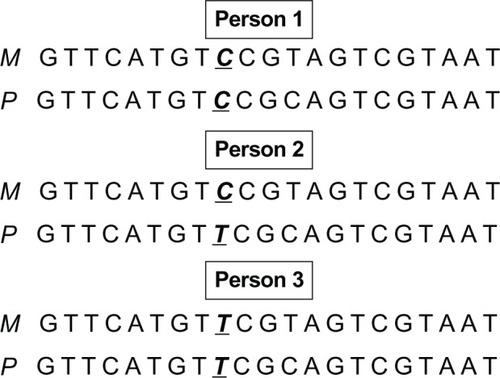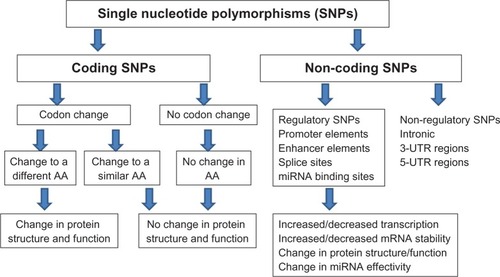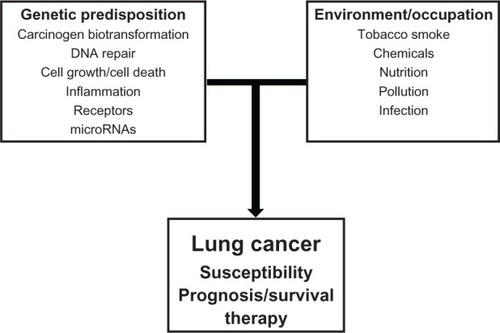Figures & data
Figure 1 Normal genetic variation in DNA bases. Single nucleotide polymorphisms are normal nucleotide variations inherited from parents. There is a common C allele at a specific site of a gene whereas some individuals carry a variant allele T at that specific site. The individuals in the population will have three genotypes. Person 1 has inherited a C allele from mother (M) at that specific site whereas a C allele from the father (P). Therefore, this person is a C/C homozygote for this specific site. Person 2 has a maternal C and a paternal T and is heterozygote while person 3 carries two variant alleles T (inheriting a maternal T allele and a paternal T allele) at this site and is therefore a “variant homozygote” in the population.

Figure 2 Types of single nucleotide polymorphisms (SNPs) and their biological consequences. SNPs occurring in the coding sequences (exons) may lead to codon change leading to an amino acid (AA) or no AA change. Changes in AA could lead to either change in protein structure or function. Noncoding regulatory SNPs could potentially lead to changes in transcription, mRNA stability, protein structure or function, or changes in binding sites of miRNA.

Figure 3 Overview of interaction of genes from diverse genetic pathways with environmental/occupational factors in lung cancer development. A number of genetic factors such as normal genetic variations in the genome will interact with environmental and/or occupational factors to modulate lung cancer susceptibility, survival, and therapy.
